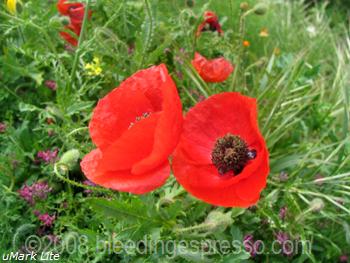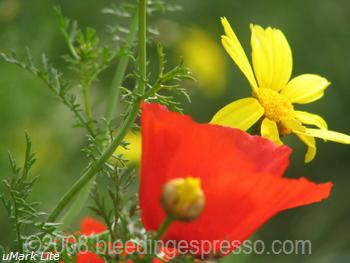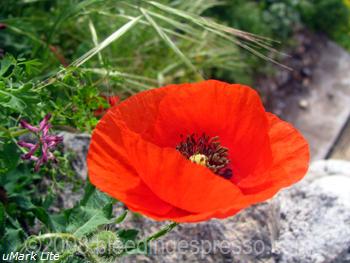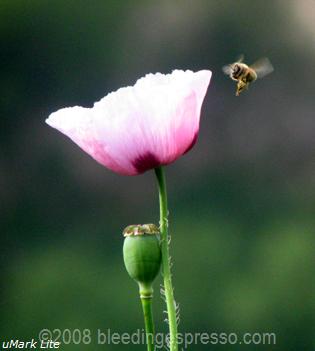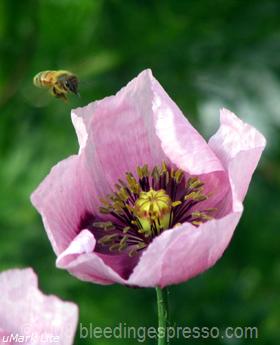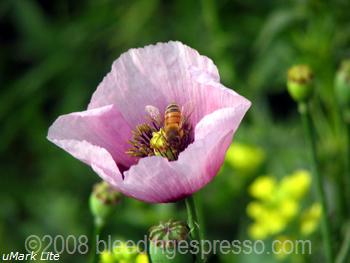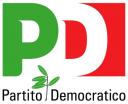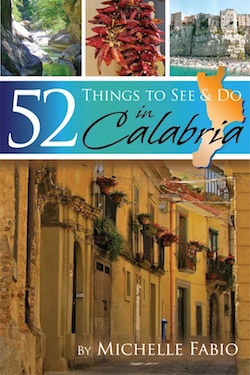Archive for the ‘for a good cause’ Category
Oatmeal Banana Craisin Muffins: O Foods for Ovarian Cancer Awareness Month
Here is a fast, easy, tasty (just like we like ’em!) O Food recipe based on one from Cooks.com.
Read on...O Foods for Ovarian Cancer Awarness Month Contest
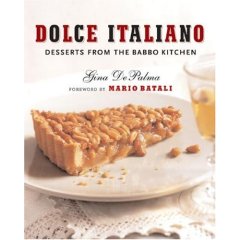 Some of you may remember last year’s Dolce Italiano contest to spread the word about the wonderful cookbook by the 2008 Bon Appetit award-winner for best Pastry Chef Gina DePalma.
Some of you may remember last year’s Dolce Italiano contest to spread the word about the wonderful cookbook by the 2008 Bon Appetit award-winner for best Pastry Chef Gina DePalma.
Well a few months ago, I found out from Diana, a lovely blogger and B & B owner in northern Italy, that Gina was diagnosed with ovarian cancer and was undergoing a whirlwind of treatment. I wrote Gina a quick email, sending my best thoughts and wishes, and Gina, recovering from surgery and about to undergo chemotherapy, immediately wrote back a message full of courageous spirit, humor, and love–vintage Gina.
You see, Gina was already thinking about what she could do to raise ovarian cancer awareness and money to fight the disease. So a few of us from the Dolce Italiano contest got together and we proudly announce:
O Foods for Ovarian Cancer Awareness Month
September is Ovarian Cancer Awareness Month. In honor of Gina DePalma, author of Dolce Italiano: Desserts from the Babbo Kitchen and Executive Pastry Chef of Babbo Ristorante in NYC, who was recently diagnosed with ovarian cancer, Sara of Ms Adventures in Italy, Jenn of The Leftover Queen, and Michelle of Bleeding Espresso are asking you to donate to the:
Ovarian Cancer Research Fund (via FirstGiving.org)
and then, out of the goodness of your hearts and to be eligible for the O Foods for Ovarian Cancer Awareness Month Contest, please do the following:
1. Post a recipe to your blog using a food that starts or ends with the letter O (e.g., oatmeal, orange, okra, octopus, olive, onion, potato, tomato) and include this entire text box in the post;
OR
2. If you’re not into the recipe thing, simply post this entire text box in a post on your blog to help spread the word about the event and Ovarian Cancer Awareness Month.
AND
3. Then send your post url [along with a photo (100 x 100) if you’ve made a recipe] to ofoods[at]gmail[dot]com by 11:59 pm (Italy time) on September 30, 2008.
We will post a roundup and announce prize winners on October 3.
Prizes:
- 1 Recipe Prize for best “O food” concoction: $50 gift certificate to Amazon;
- 1 Awareness Prize for only publicizing event: Copy of Dolce Italiano cookbook.
———
From the Ovarian Cancer Research Fund:
- Ovarian cancer is the leading cause of death from gynecologic cancers in the United States and is the fifth leading cause of cancer death among U.S. women; a woman’s lifetime risk of ovarian cancer is 1 in 67.
- The American Cancer Society estimates that 21,650 women will be diagnosed with ovarian cancer in the U.S. in 2008 and about 15,520 women will die from the disease.
- The symptoms of ovarian cancer are often vague and subtle, making it difficult to diagnose. There is no effective screening test for ovarian cancer but there are tests which can detect ovarian cancer when patients are at high risk or have early symptoms.
- In spite of this patients are usually diagnosed in advanced stages and only 45% survive longer than five years. Only 19% of cases are caught before the cancer has spread beyond the ovary to the pelvic region.
- When ovarian cancer is detected and treated early on, the five-year survival rate is greater than 92%.
Please donate to the Ovarian Cancer Research Fund
and help spread the word!
P.S. Feel free to use the ribbon widget in my sidebar in *your* sidebar.
If you need help setting it up, please contact me!
May, Poppies, and Remembering Veterans
Even though I’m not in America any more, the end of May still means bright red poppies to me.
Yes, these in the fields around here, but I’m talking about the ones that remind me of the sacrifices veterans have made for you and me and how many of them still suffer today even while in the “care” of our veterans’ hospitals.
Every year around Memorial Day, the Veterans of Foreign Wars (VFW)’s Buddy Poppy Program and the American Legion Auxiliary Poppy Program distribute millions of crepe paper poppies in exchange for contributions that benefit disabled and hospitalized veterans and their families.
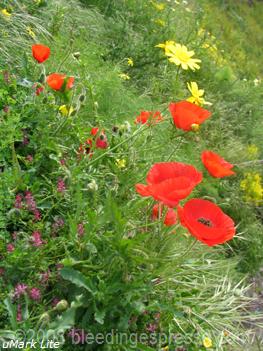 Where do the poppies come from?
Where do the poppies come from?
Why, the hospitalized veterans make these nine-piece wonders in “Poppy Shops,” gaining a small wage and also some physical and mental therapy.
What is history of the paper poppy?
During World War I, ever-resilient poppies grew and thrived in the war-torn battlefields of Belgium, inspiring this poem by Canadian Lieutenant Colonel John McCrae:
In Flanders Fields
In Flanders fields the poppies blow
Between the crosses, row on row
That mark our place; and in the sky
The larks, still bravely singing, fly
Scarce heard amid the guns below.
We are the Dead. Short days ago
We lived, felt dawn, saw sunset glow,
Loved and were loved, and now we lie
In Flanders fields.
Take up our quarrel with the foe:
To you from failing hands we throw
The torch; be yours to hold it high.
If ye break faith with us who die
We shall not sleep, though poppies grow
In Flanders fields.
The symbol was picked up by Allied countries immediately after the war ended and paper poppies began being sold. In 1921, the Franco-American Children’s League sold French-produced poppies to benefit the children in areas of France and Belgium hit heaviest by the war.
When the Children’s League dissolved in 1922, the VFW took over the cause and two years later began the Buddy Poppy Program with veterans producing the poppies for the benefit of veterans and their families.
As much as I love the gorgeous wild, natural poppies that surround me, I’m still nostalgic for those paper beauties and all they represent.
So if you’re in America, can you do me a favor? Please make a contribution to the VFW or American Legion Auxiliary and get yourself a poppy.
That way you can remember too.
Earth Day 2008: The Plight of the Honeybee
 Today is Earth Day, 24 hours for us to stop and really think about how our actions affect the environment.
Today is Earth Day, 24 hours for us to stop and really think about how our actions affect the environment.
Of course we should do this every day, but, according to the Earth Day Network website, since 1970, April 22 has represented at least one day per year for people around the world to “celebrate the earth and renew our commitment to building a safer, healthier and cleaner world for all of us.”
The Earth Day Network site offers many ideas as to how you can get involved:
Volunteer. Go to a festival. Install solar panels on your roof. Organize an event where you live. Change a habit. Help launch a community garden.
Communicate your priorities to your elected representatives.
The possibilities are endless! Do something nice for the earth, have fun, meet new people, and make a difference.
This Earth Day, I’m going to tell you about the birds and the bees.
OK, really just the bees, but I wanted to make sure you were paying attention.
The plight of honeybees may seem small in comparison to many of the other problems our environment faces, but make no mistake–the fact that millions of honeybees are dying (Colony Collapse Disorder) can have disastrous effects not only on flowers and honey but also on food production, including many of the fruits we hold so dear.
Honeybees pollinate about a third of the food we eat, and without sufficient numbers of bees, these crops simply can’t survive.
Why are bees dying?
A few reasons:
- stronger pesticides (which, incidentally, can be toxic to humans as well);
- loss of natural habitats due to urban expansion;
- changes in farming techniques that replace native vegetation with pasture grasses for cattle; and
- more frequent severe droughts in some areas like southern Italy
The endangerment of honeybees has been big news in Italy. The National Beekeepers’ Association (UNAAPI) has seen drastic drops in honey production–as much as 50%–because of a silent “slaughter of bees.” Along with southern Italy, Tuscany and Umbria have also been hit hard.
Environmental group Legambiente and the Slow Food movement have teamed up to help the UNAAPI create a buzz about the endangerment of bees; hopefully world leaders and lawmakers will work together to ensure that we all avoid getting stung by a major loss of honeybees.
For more information and what you can do to help, see PBS’s program Endangered Honeybees and Häagen-Dazs’s page on how to Help the Honey Bees.
How to Vote as an Italian Living Abroad
 There has been a *huge* increase in requests for recognition of Italian citizenship over the past several years–my and my father’s requests included.
There has been a *huge* increase in requests for recognition of Italian citizenship over the past several years–my and my father’s requests included.
Along with “creating” many more Italian citizens in the world, this also means that many (non- or little-speaking Italian) people are becoming eligible to vote in Italian elections for the first times in their lives.
And believe me, the process is *very* different than in the United States.
As I think there may be quite a few people out there confused by the instructions, I’m going to break it down here, in English, and urge you–if you are an Italian citizen, PLEASE exercise your right to VOTE in this election.
AND PLEASE, PLEASE, PLEASE NOT FOR BERLUSCONI!
Every Italian citizen residing abroad should be registered with the local consulate in the A.I.R.E. (Anagrafe Italiani Residenti Estero). If you are, you should have already received a packet from your consulate including:
- Your electoral certificate (with your name on giving you the right to vote);
- Two (2) different colored ballots (pink for the Camera dei Deputati and blue for the Senato); if you are under the age of 25, you will receive only a ballot for the Camera;
- Two (2) envelopes (one small, blank, and white and the other larger and self-addressed and stamped to your consulate);
- The list of candidates for your area; and
- An information sheet.
1. First of all, grab and use a blue or black pen.
2. Now, an aside to explain a little of what’s going on with the ballots: below the main candidates, all of the people on their “lists” are from the “estero” or outside Italy; those elected will represent your interests as an Italian citizen residing abroad.
Depending on where you live, you will be able to vote for differing numbers of deputati and senatori–don’t worry, the number of blank lines will tell you how many you are allowed to write in.
If you are in North or Central America like my dad, for example, you can vote for 2 deputati and 1 senatore.
So . . .
3. To vote, you place an X over the logo of the party of your choice.
My advice is this one:
Vote for Veltroni! Woohoo!
4. Now you can write in your choices for senatori and deputati as described above being extremely careful to copy the names exactly as printed on the list. And don’t write anything else!
[If you would like my suggestions on senatori and deputati please contact me privately; find information on the candidates (in Italian) here.]
5. Fold and put your two ballots in the small blank white envelope and seal it.
6. Put that envelope inside the bigger envelope addressed to the consulate.
7. Tear off the bottom part of your electoral certificate at the perforation, put that in the big envelope with the ballots, and seal it.
8. Mail it off–it must be received by your consulate by April 10–and wait for election results.
Optional: buy some prosecco if you’re feeling particularly confident in your party.
This page has a fabulous graphic of this whole process. If you have any questions, please leave a comment or contact me.
And, in case I haven’t been clear . . .
*Special thanks to the website of Gino Bucchino, candidate for Camera dei Deputati for Central and North America with Partito Democratico‘s (and my) main man, Walter Veltroni; and I’m not just saying this because Bucchino was born in Calabria, I swear.


